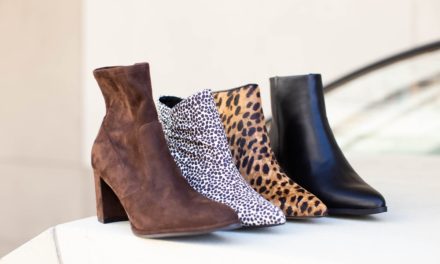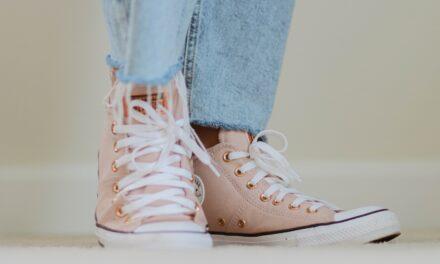The fashion industry is constantly evolving and in this article we look the impact of influencers on fashion trends that drives an ever-changing market and consumer demand. One of the most prominent factors influencing fashion trends in recent years has been the rise of influencers. In this article, we will explore the impact that influencers have had on the fashion industry and why it is important to study their influence.
Definition of Influencers and their Role in Fashion Industry
Influencers are individuals who have established a strong following on social media platforms such as Instagram, TikTok, and YouTube. They are known for their ability to sway consumer behavior and shape popular culture with their opinions and recommendations.
Influencers come from various backgrounds, including celebrities, models, bloggers, and everyday people who have amassed a significant following by producing compelling content. In the fashion industry specifically, influencers play a significant role in promoting products and brands through sponsored posts or collaborations.
Their endorsements can help increase brand awareness and generate sales for companies that partner with them. Furthermore, influencers can also provide valuable insights into consumer behavior trends that brands can use to inform future marketing strategies.
Brief History of Influencer Marketing in Fashion Industry
Influencer marketing in the fashion industry has been around for decades but has only recently gained significant traction due to social media platforms’ emergence. Previously, brands relied primarily on celebrities or models to endorse their products through traditional advertising channels such as billboards or print ads.
However, with the rise of social media platforms such as Instagram in 2010 came opportunities for everyday individuals to become influential figures online through creating high-quality visual content that resonated with audiences worldwide. Brands began recognizing these individuals’ potential reach beyond traditional advertising methods and started collaborating with them on campaigns to promote their products.
Importance of Studying the Impact of Influencers on Fashion Trends
Understanding the impact of influencers on fashion trends is crucial for companies looking to stay competitive in the ever-changing market. By analyzing the effectiveness of influencer marketing campaigns, brands can gain a better understanding of consumer behavior trends and tailor their strategies accordingly.
Moreover, studying the impact of influencers on fashion trends can help identify new opportunities for collaboration and innovative marketing strategies. It can also lead to a deeper understanding of how social media platforms influence consumer behavior and popular culture overall.
The Rise of Influencer Marketing in Fashion Industry
Emergence of social media platforms as a tool for influencer marketing
The emergence of social media platforms has been a game-changer for the fashion industry and the way it markets its products. Social media platforms such as Instagram, Facebook, Twitter, and TikTok have become an integral part of the modern consumer’s life.
Today’s consumers spend a considerable amount of time on these platforms, making them an ideal channel to reach out to potential customers. Brands use these platforms to showcase their products and services by partnering with influencers who have amassed significant followings.
Key players in the influencer marketing game
Some key players in the influencer marketing game include Huda Kattan, Chiara Ferragni, Kristina Bazan, Aimee Song, and Camila Coelho. These influencers have built loyal followings over time by consistently creating content that resonates with their audience. They work with brands to promote their products on their social media channels by incorporating them into their daily routines or posting photos wearing or using them.
Advantages and disadvantages of using influencers as a marketing strategy
One significant advantage of influencer marketing is that it allows brands to reach out to a highly engaged audience through someone they trust and admire. Unlike traditional forms of advertising where the message is coming from the brand itself, influencer marketing allows brands to leverage an already established relationship between an influencer and their followers.
However, there are some disadvantages associated with using influencers as a marketing strategy. One major issue is that some influencers may not disclose when they’re promoting something sponsored by a brand; this can create dishonesty between them and their followers leading to losing credibility over time.
Additionally, some influencer campaigns may not be effective or deliver measurable results despite large investments from brands. Therefore, brands need to carefully select the right influencers who align with their values and target audience to ensure successful campaigns.
The Impact of Influencers on Fashion Trends
How Influencers Shape Consumer Behavior
Influencers have become a powerful force in shaping consumer behavior. They have the ability to sway buying decisions and create trends that resonate with their followers. The influence of influencers is particularly strong in the fashion industry, where they are able to showcase different styles and inspire their followers to try new things.
Through sponsored posts, collaborations, and product placements, influencers can introduce their followers to brands and products they may not have otherwise discovered. One way that influencers shape consumer behavior is by creating a sense of urgency around certain products or trends.
Limited edition drops or exclusive collaborations can create a frenzy among followers who want to be part of the hype. Additionally, influencers often post about their favorite products or outfits, which can lead to increased demand for those items.
Overall, influencers have the power to influence consumer behavior in real-time. With the instant nature of social media platforms like Instagram and TikTok, influencers can create buzz around a product or trend almost instantly.
Examples of Successful Influencer Campaigns that Have Impacted Fashion Trends
There have been numerous successful influencer campaigns that have impacted fashion trends over the years. One example is the Nike x Off-White collaboration that was heavily promoted by Virgil Abloh on his social media channels. The collection quickly sold out and sparked a trend for high-end sneakers with deconstructed designs.
Another successful influencer campaign was when Kim Kardashian West launched her SKIMS shapewear line in 2019. She utilized her massive social media following to showcase the versatility and comfort of her pieces, leading to sold-out collections within minutes of launching.
Streetwear brand Supreme has also been known for using influencer marketing effectively. By collaborating with artists, musicians, and other celebrities on limited edition drops, Supreme has created a sense of exclusivity around their brand and sparked a trend for streetwear in the fashion industry.
Analysis of the Impact on Different Segments (e.g., Luxury, Streetwear, Fast Fashion)
The impact of influencers on different segments of the fashion industry is not uniform. Luxury brands have been slower to adopt influencer marketing, but those who have utilized it successfully have seen increased engagement and sales.
Streetwear brands, on the other hand, have been at the forefront of using influencer marketing to create hype around limited edition releases. Fast fashion brands are perhaps most heavily impacted by influencers.
These brands rely on quick turnover and frequent releases to stay relevant in the industry. Influencers can help fast fashion brands keep up with trends and introduce new products to their followers quickly.
Additionally, influencers have an outsized impact on niche segments of the fashion industry. For example, modest fashion has become increasingly popular in recent years due in part to influencers who showcase stylish yet conservative outfits.
Influencers have a significant impact on shaping consumer behavior and driving trends within the fashion industry. By utilizing social media platforms effectively and creating buzz around specific products or collaborations, they can help brands increase engagement and sales while introducing their followers to new styles and trends.
The Role of Social Media Platforms in Influencing Fashion Trends
Social media platforms have become extremely influential in shaping fashion trends around the world. With the rise of influencers, social media platforms are now key players in the fashion industry. In this section, we will explore the role of social media platforms in influencing fashion trends.
Instagram: The Most Influential Platform for Fashion Trends
Instagram is considered to be the most influential platform for fashion trends. It has over 1 billion active users, making it a powerful tool for brands and influencers alike.
Instagram’s visual nature allows for easy sharing of photos and videos, making it an ideal platform for showcasing fashion and beauty products. The platform also offers various features such as Instagram Stories and IGTV that allow influencers to engage with their followers on a more personal level.
Brands can also collaborate with influencers through sponsored posts or by gifting them products to feature on their profiles. As Instagram continues to grow, it is expected to remain a prominent force in influencing fashion trends across different segments.
TikTok: The New Player in the Game
TikTok is a relatively new player in the game but has quickly gained popularity among Gen Z audiences who use it as a source of inspiration for fashion and beauty looks. The platform’s short-form video format allows creators to share quick tutorials and showcase their unique styles. TikTok’s algorithm also makes it easy for new creators to get discovered by constantly showing content from accounts that match user interests.
This creates an opportunity for emerging brands or designers who are looking to tap into this audience and gain exposure. As TikTok’s user base continues to grow, we can expect its influence on fashion trends to increase as well.
YouTube: How It Differs from Other Platforms
YouTube differs from other social media platforms because it offers long-form video content that allows creators to share in-depth reviews and tutorials. The platform is particularly popular among beauty and fashion influencers who use it to showcase makeup tutorials, product reviews, and fashion hauls. Creators can monetize their content through YouTube’s partner program, which allows them to earn money through ads and sponsorships.
Brands can also collaborate with influencers through sponsored videos or by gifting them products to feature on their channels. While YouTube may not have the same instant gratification as other social media platforms like Instagram or TikTok, its long-form content offers a unique opportunity for creators to connect with their audiences on a deeper level.
The Future Of Influencer Marketing In Fashion Industry
The Evolution and Future Predictions for Influencer Marketing
Influencer marketing in the fashion industry is already a multi-billion-dollar business. However, with technology advancements and changing consumer behavior, the future of influencer marketing is bound to change.
Influencers will have to adapt to the evolving technology landscape as well as changes in consumer demand. One trend that is set to dominate influencer marketing is authenticity.
Consumers are increasingly demanding transparency and honesty from influencers. This means that influencers will have to be more authentic in their content creation and messaging.
As such, brands will have to focus on partnering with influencers who genuinely believe in their products rather than just using them for visibility. Another trend will be an increased focus on niche audiences.
With more people joining social media every day, it will become harder for brands to reach everyone with a single message or influencer. Therefore, we are likely to see an increase in micro-influencers who have smaller but highly engaged audiences that align with specific brands or niches.
How Influencer Marketing Will Adapt To Changing Times And Technology Advancements
With the rise of virtual try-on technologies such as AR/VR, influencer marketing could also go digital. Instead of showcasing looks on models or influencers, brands could create virtual representations of their products on different body types and skin tones through AR/VR technology. This would also allow consumers to try on clothes virtually before buying them.
Another way influencer marketing might adapt is through artificial intelligence (AI). AI algorithms could analyze the content preferences of individual consumers and suggest the most relevant influencers for them based on data analysis thus increasing engagement.
Social media platforms themselves are constantly evolving, too – Instagram’s recent launch of Reels shows its response against TikTok’s explosive growth while YouTube continues its push into stories format – this highlights how platforms are ever-changing and therefore creating new opportunities for marketing efforts. The future of influencer marketing in the fashion industry looks bright.
As technology continues to advance and consumer behavior changes, brands will have to keep up with the trends. The most successful influencers will be those who can adapt to these changes while still maintaining their authenticity and niche appeal.
Conclusion
The impact of influencers on fashion trends cannot be overstated. The use of influencers as a marketing tool has revolutionized the fashion industry, making it a more democratic and accessible space for consumers to engage with. Throughout this paper, we have explored the different ways in which influencers shape consumer behavior and have analyzed the impact of influencer campaigns on different segments of the fashion industry.
We have seen how social media platforms such as Instagram and TikTok play a key role in influencing fashion trends and how YouTube differs from other platforms when it comes to influencer marketing. Additionally, we have discussed both the advantages and disadvantages of using influencers as a marketing strategy.
Summary of Key Points Discussed Throughout the Paper
Firstly, we looked at the rise of influencer marketing in the fashion industry and its evolution over time. We identified key players in this game as well as some advantages and disadvantages associated with using influencers as part of your marketing strategy.
Secondly, we examined how influencers shape consumer behavior by analyzing successful influencer campaigns that impacted fashion trends. From luxury brands to streetwear labels and fast-fashion retailers, we saw how specific segments were influenced by certain types of influencers.
Thirdly, we looked at social media platforms such as Instagram and TikTok that play a significant role in influencing fashion trends today. We discussed how each platform differs from one another when it comes to influencer marketing strategies.
Implications
The implications for brands seeking to leverage influencer marketing are clear: working with relevant influencers can be an effective way to reach new audiences, increase brand awareness and engagement levels among consumers while also boosting sales revenue. However, careful consideration must be given to selecting appropriate partners who align with brand values while avoiding any negative associations or controversies that might arise from such collaborations. Looking forward, it is likely that influencer marketing will continue to evolve and adapt as consumer preferences and technology advances.
Brands must stay abreast of these changes to ensure they remain competitive in a fast-paced, dynamic industry. The future of influencer marketing is indeed bright for those who embrace it in a strategic, thoughtful manner.










